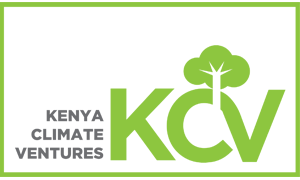More often than not, the elderly group in the African Society is characterised with dependence and involvement of caregivers. Many may not have access to a stable and consistent source of income and are normally supported by their children who live in the city. A few of the elderly folk who had stable jobs will enjoy their pension upon retirement. But this is not always the case for all.
According to the Kilifi County Integrated Development Plan 2013- 2017, the rate of employment in the county is approximately 30 per cent of the total population which stands at approximately 1.4 million people. A number of homes comprise of elderly folk whose children have fled to the urban cities in search of employment opportunities.
Due to the harsh climate and unreliable rainfall, agricultural production is not very promising in the area. Papu Haroon, the Chief Executive Officer of Kilifi Moringa Estates (KME) in his quest to help the community with alternative farming introduced the moringa tree to the community in Matsangoni, Kilifi county in 2014.
A test site was established at the Matsangoni Model Health Centre where 360 trees were planted by KME. The vulnerable groups frequenting the health facility were tasked with taking care of the trees, thus becoming the first to benefit form the project.
Haroon asserts that the most productive beneficiaries of the Moringa tree are the vulnerable groups. These include elderly men and women, people living with disabilities and chronic illnesses. Haroon focuses on this group of people to assist in their economic empowerment and to instill knowledge on the importance of growing the tree which is equally drought tolerant.
The elderly folk account for 10% of their farmers but the number is set to increase in the coming year as KME plans to sensitize more members of the community on the benefits of growing moringa.
“By mid next year, we believe we shall increase the number of out growers in the vulnerable category to 25%,” noted Haroon.
Johnson Mwakalama a retired elderly man, planted 100 trees more than 10 years ago. He planted the trees for nutritional purposes. “Initially, I would discard the seeds due to lack of knowledge on their value,” notes Mwakalama. In the last harvesting season, Killifi Moringa bought 300 kilogrammes at KSh.250 per kilogramme from his farm.
“When my wife saw the proceeds from the trees, she bought 350 seedlings from KME and planted them on one acre. She is currently one of the out grower farmers that the company is working with.
Another beneficiary, Mama Jillo, an elderly 75-year-old woman has a few Moringa trees on her compound. She strongly believes that she has a store of value in her Moringa. She will occasionally call Haroon to negotiate for a small loan in exchange for her seeds.
Haroon notes that most farmers who plant maize will roughly earn KSh.4000 in a year from an acre of maize which is two bags of maize. On the same piece of land, 267 trees will yield 20 times as much in two harvest seasons. KME is currently working with 327 farmers covering a cumulative total of 271.5 acres.
“This form of gainful employment has gone a long way in eliminating dependence stigma that is associated with the marginalized group.”In a span of two years, KME has experienced a change in livelihood with the group and received positive feedback from the community on the progress made by the elderly through economic empowerment.
“Unlike maize farming where one has to wait to sell their grain at a profit, KME pays immediately upon receipt of the leaves. I am guaranteed of an income whenever my seeds are ready. I do not have to worry about the market,” added Mwakalama.
Kenya Climate Ventures (KCV) has invested $500,000 in KME for the increase of acreage in growing moringa and ultimately the development of additional products from the waste. These include facial masks, organic fertilizer and biogas. Having more vulnerable groups on board with ensure continuity of the value addition chain and more income for the farmers.











